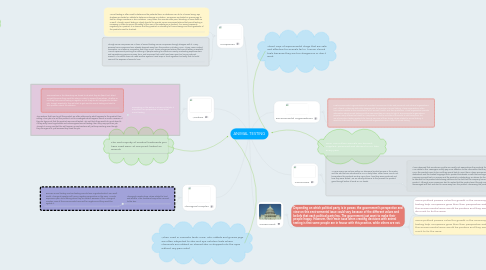
1. Companies
1.1. Animal testing is often used to determine the potential harm a substance can do to a human being. Eye shadows are tested on rabbits to determine damage or irritation. Sunscreens are tested on guinea pigs to test for allergic reactions or skin irritations. Many times, the animals suffer pain, bleeding, or even death as a result. Though animal testing is clearly harmful to animals, some companies believe that animal testing is necessary in order to ensure the safety of the user of the substance or product. If an animal responds negatively to a product, it is obvious that they product is unhealthy for human beings and the ingredients of the products need to checked.
1.2. Though some companies are in favor of animal testing, some companies strongly disagree with it. Many personal-care companies have already stepped away from the practice, including Avon, Almay, Jason Natural Cosmetics, Liz Claiborne Cosmetics, and many more. These companies believe that animal testing is wasteful. Animal experiments prolong the suffering of people waiting for effective cures by misleading experimenters and squandering precious money, time, and resources that could have been spent on human-relevant research. The world does not need another eyeliner, hand soap or food ingredient so badly that it should come at the expense of animals’ lives.
2. Environmental Organizations
2.1. Most environmental organizations such as school environment clubs and provincial and national organizations such Alberta Wilderness definitely disagree with the practice of animal testing. These organizations often have values related to the conservation of all animals' health, and their protection. These organization provide information about animal testing and the resources they are using to fight it. Environmental organizations propose many different solutions for companies in Alberta and around the world to shift away from the use of animals in testing products for toxicity. Because of their strong values related to animal testing, it would be ludicrous to say that environmental organizations are in favor of animal testing.
3. Consumers
3.1. As consumers, we are bias within our decisions by what we see in the media and the ads that are introduced to us in a daily basis. Often times, we do not know where the products we buy come from, how they were produced and how they were tested. We are usually oblivious to the process the product goes through before it lands on our hands.
3.1.1. I have observed that sometimes, youths are usually not aware where the products they consume come from. As a teenager, I can relate to this. Teenagers usually pay more attention to the information that the product claims instead of focusing HOW the product came to be. Did they animal test it? Was it from a toxic environment? We are often clouded with distractions and the loaded language that a product bombards us with that we forget our values and beliefs. If the company's animal test is a success and the product is outstanding, our desire for the product increases. Consumers start to demand for the product while being oblivious to the fact that the company harms animals in the process of making the product. Although once consumers start to realize that the product went through animal testing, some consumers may be discouraged with fact and start to move away from the product, decreasing the product's demand.
4. Aboriginal Peoples
4.1. Aboriginal Peoples have values related to land and wildlife. Their traditional ways often connect to the two.
4.1.1. Because animal testing involves feeding animals toxic ingredients which can result death, Aboriginal peoples will have a negative perspective on the issue. Animals experience pain and suffering when they are tested. Because of this, Aboriginal Peoples’ view of this environmental issue will be negative and they would be against it.
5. Workers
5.1. Depending on the worker's values and beliefs, it may affect their perspective or view about animal testing.
5.1.1. Some workers in the laboratory are forced to do what they do (feed, hurt, blind animals) because they need the salary in order to support themselves. Whether or not they think animal testing is negative or not, they are still obligated to do their job. Though eventually, they will start to get used to animal testing and start to feel apathetic about the situation.
5.1.2. The workers that have to sell the product are often oblivious to what happens to the product their selling. Their job is to sell the product, not to investigate what happens how it is made. However, if they do figure out that the product was animal tested, I do not think they would do much about it. If they really have huge beliefs and values against animal testing, then they may quit their job. Though it is very rare that this will happen & most workers will just keep working even though they are against it, just because they need the job.
6. Government
6.1. Depending on which political party is in power, the government’s perspective and view on this environmental issue could vary because of the different values and beliefs that each political party has. The government just want to make their people happy. However, their main issue when creating decisions with animal testing is that some people are in favour with this practice, while others are not.
6.1.1. Some political powers value the growth in the economy. If animal testing help companies grow then their perspective and view of this environmental issue would be positive and they would not do much to fix the issue.
6.1.2. Some political powers value the growth in the economy. If animal testing help companies grow then their perspective and view of this environmental issue would be positive and they would not do much to fix the issue.
